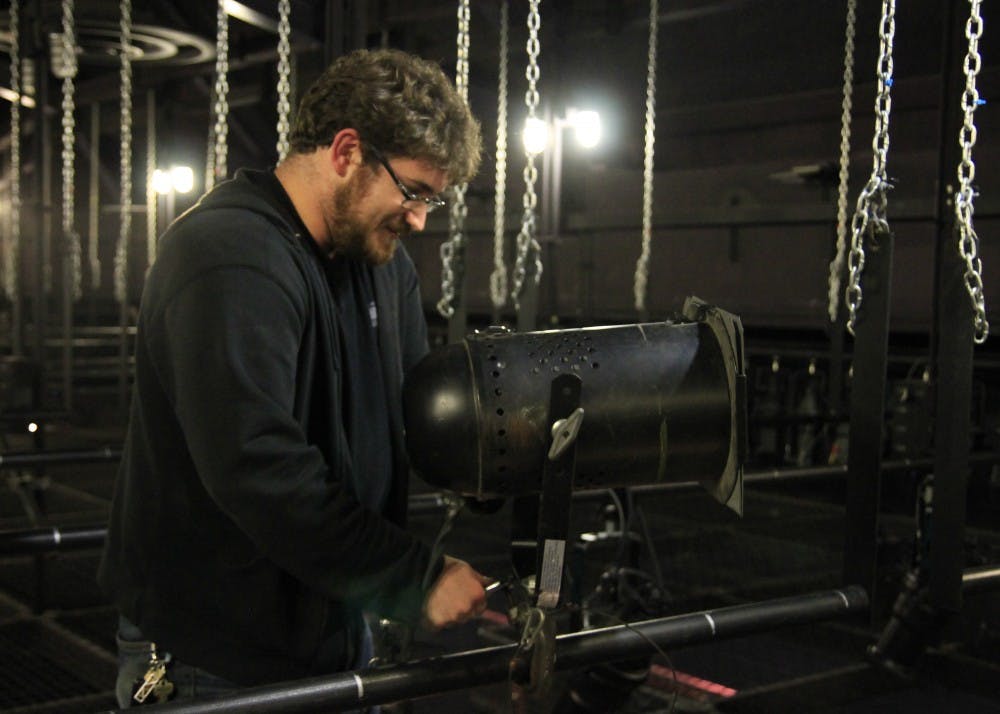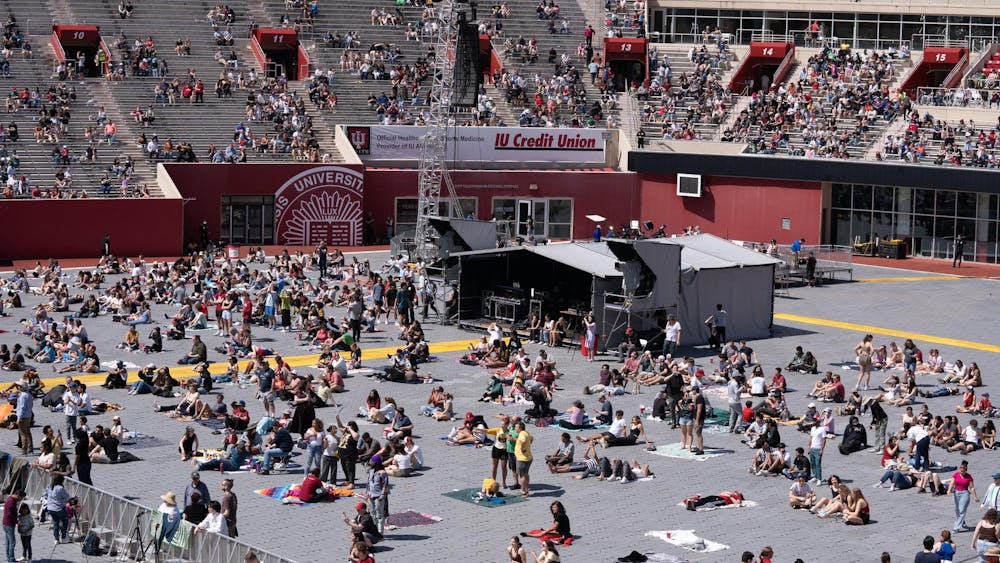Third-year master's of fine arts lighting design student Tony Stoeri described lighting design as tap dancing naked on a table.
Unlike other behind-the-scenes roles in theater, the majority of work in lighting design happens a few days before a show debuts, which leads to a frenzy of emotions. These are the elements that inspired his dancing-naked metaphor.
Stoeri recently worked as the master electrician on IU’s production of “Peter and the Starcatcher,” which debuted Oct. 31. His job was to install the lights that Darrien Brimberry, the production's lighting designer and second-year MFA lighting design student, set out in her light plot, a layout of where she wanted lights to go.
Lighting design begins much like any other behind-the-scenes role: months in advance.
“We encourage them to meet as a team as early as possible before they go off in small groups,” said Allen Hahn, associate professor and head of the MFA lighting design program. “The virtue of that is that it just makes for work on stage more cohesive.”
After the mood and tone of a show is decided, a lighting designer begins making a light plot. It’s the master electrician’s job to install the lights. However, sometimes the master electrician must step in when a lighting plot is too ambitious.
Once lights have been installed, the lighting designer begins to play with them. However, he or she cannot get an accurate grasp of the final product until actors come into play. This means that while months may be spent talking with creative teams and creating the light plot, lighting cannot be finalized until two or three days before a performance.
“You can draft all day, but until you see it in front of you, there’s not an accurate way to predict what it will look like,” Brimberry said.
The last few days before a show are what Hahn calls “10 out of 12s,” because students work 10 out of 12 hours in a day, with a quick two-hour break for lunch. This is the most challenging part of lighting design.
“Just with the time we have and the fact that it is more accurate with people on stage, there’s not a lot of time,” Brimberry said.
In fact, Brimberry said her advisers will sometimes use the phrase “be creative now,” because so much work needs to be done in such a short time.
Stoeri said this makes opening night difficult to enjoy.
“You’re always moving and always working, so it’s hard to turn it off,” Stoeri said.
However, after a few shows, Stoeri said he can fully appreciate his work.
“The best part about seeing it on stage is that you can only see it in that moment,” Stoeri said. “It’s a sense of discovery."
While Stoeri and Brimberry said lighting design is stressful, they both enjoy it. Brimberry said she likes playing with the medium of light and working with different colors and locations, while Stoeri said he enjoys trying to make many moving parts work together.
Due to the high variability and the time crunch, both agree lighting design is inherently intense.
“You need to make decisions, trust your instincts, be bold, but remember simple is best,” Brimberry said.
IU’s MFA lighting design program allows all students to be both lighting designers and master electricians, which Brimberry said is why the program is so successful.
“There’s a lot of support, especially with students in the department,” Brimberry said. “That’s why we thrive.”
Stoeri echoed this, saying lights are the only intangible part of a show — something the audience feels rather than sees.
“There are few elements in theater that can be fully within the moment,” Stoeri said.






